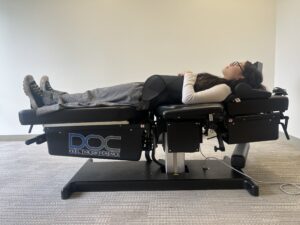Ever feel kind of blue in the depths of winter when there’s no sun and the temperatures dip below freezing? It turns out, that’s not just a mood. There is a medical term for the winter blues and it affects an estimated 10 million Americans each year. Seasonal Affective Disorder or SAD is a type of depression that manifests during a specific season year after year. While there are people who experience SAD in the summer, the majority of cases occur in the winter months.
Symptoms of SAD include:
- Increased solitude and avoidance of social situations for fear of social rejection
- Fatigue and oversleeping
- Brain fog and difficulty concentrating
- Weight gain due to cravings of sugars and starches as well as decreased physical activity
- Lethargy and a feeling of heaviness in arms and legs
- Sadness
- Hopelessness
- Suicidal thoughts
What Causes Seasonal Affective Disorder?
Looking at the symptoms, you may notice similarities to the symptoms of
Treating Seasonal Affective Disorder
Since the disorder is a type of clinical depression, it’s important you talk to your SF acupuncturist or general physician about your concerns. It is possible to treat SAD with medication. However, many people are hesitant to go on antidepressants for seasonal depression because it is a temporary condition and antidepressants have various side effects.
Fortunately, there are other lifestyle changes that can help people with SAD get through the winter.
- Light therapy involves sitting in front of a lamp called a “light therapy box” for about 30 minutes a day. The light therapy box mimics sunlight, which can help restore balance to serotonin and melatonin levels.
- Spend time outdoors in the sunlight whenever possible. Open up curtains and shades to let sunlight inside the house or office. Consider planning a vacation in the winter that takes you to a place that is sunny and warm.
- If the lack of sunlight makes it hard for you to get out of bed in the morning, try a
dawn simulating - Add a vitamin D supplement to your daily routine to boost the body’s store if it has decreased from lack of sunlight.
- Your home’s design and layout can help to reduce depression symptoms. Increasing natural light, adding plants to increase room oxygenation, removing clutter, and selecting mood-improving colors can all have a positive impact.
- Psychotherapy or talk therapy helps SAD patients identify negative thoughts and behaviors in order to change them.
- Acupuncture harmonizes the mental and energetic imbalances that cause the condition. It targets this by stabilizing the pulse of a patient by stimulating specific acupoints. To experience the benefits of acupuncture, schedule an initial consultation for evaluation and first treatment.
- Daily exercise helps boost endorphins while reducing stress hormones that cause negative feelings.
- Find healthy, productive ways to escape the stress and give yourself a mental health boost. Go for a hike, read a book, or spend some time volunteering for a cause you care about.
Conclusion
Seasonal Affective Disorder is a type of clinical depression that affects millions of Americans each year. The most common season for SAD is winter because of the decreased sunlight and bad weather. S.A.D. can be treated with medication, but for people that do not want to start antidepressants, lifestyle changes can help manage symptoms.
To experience the benefits of acupuncture, schedule an initial consultation for evaluation and first treatment.



